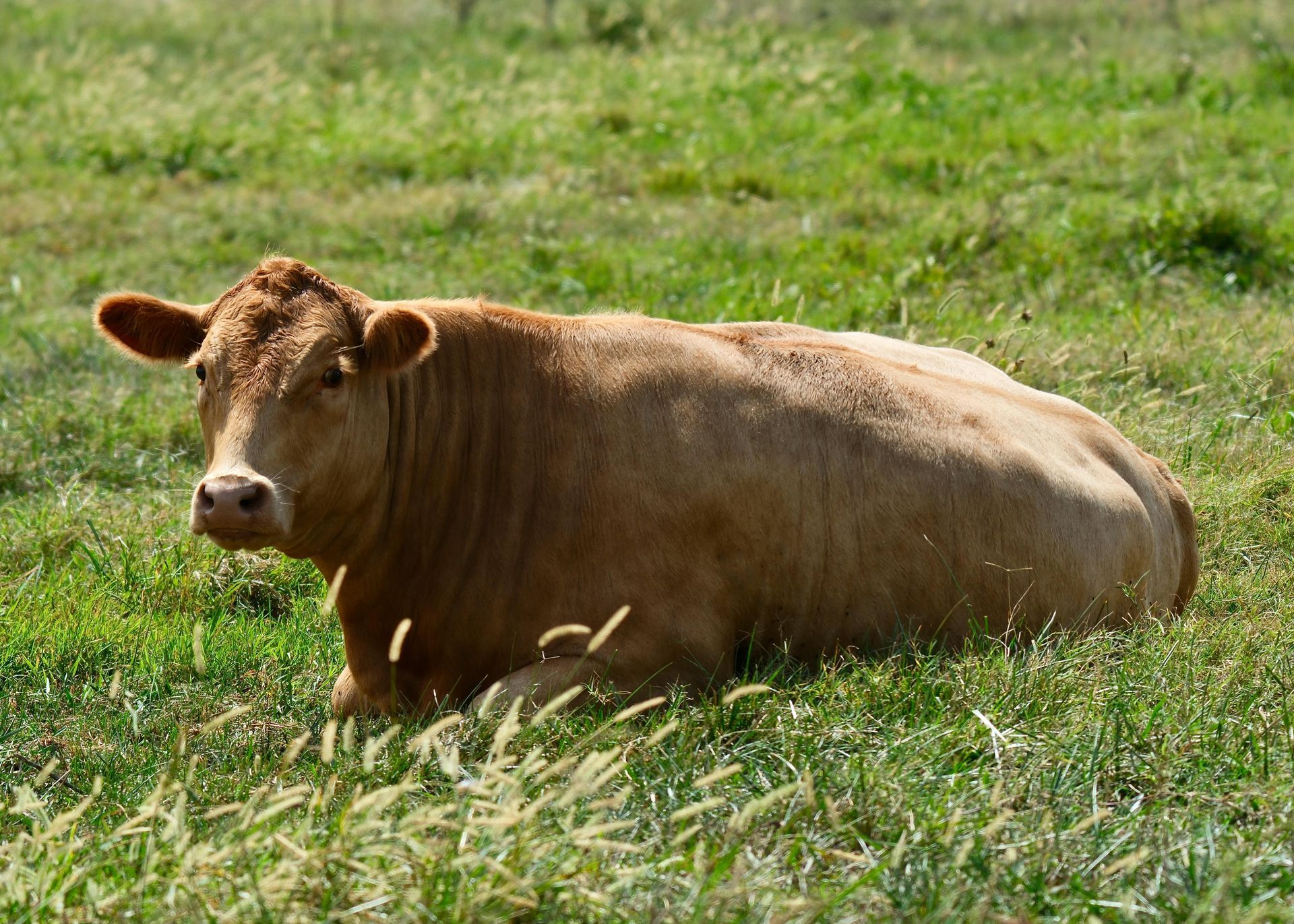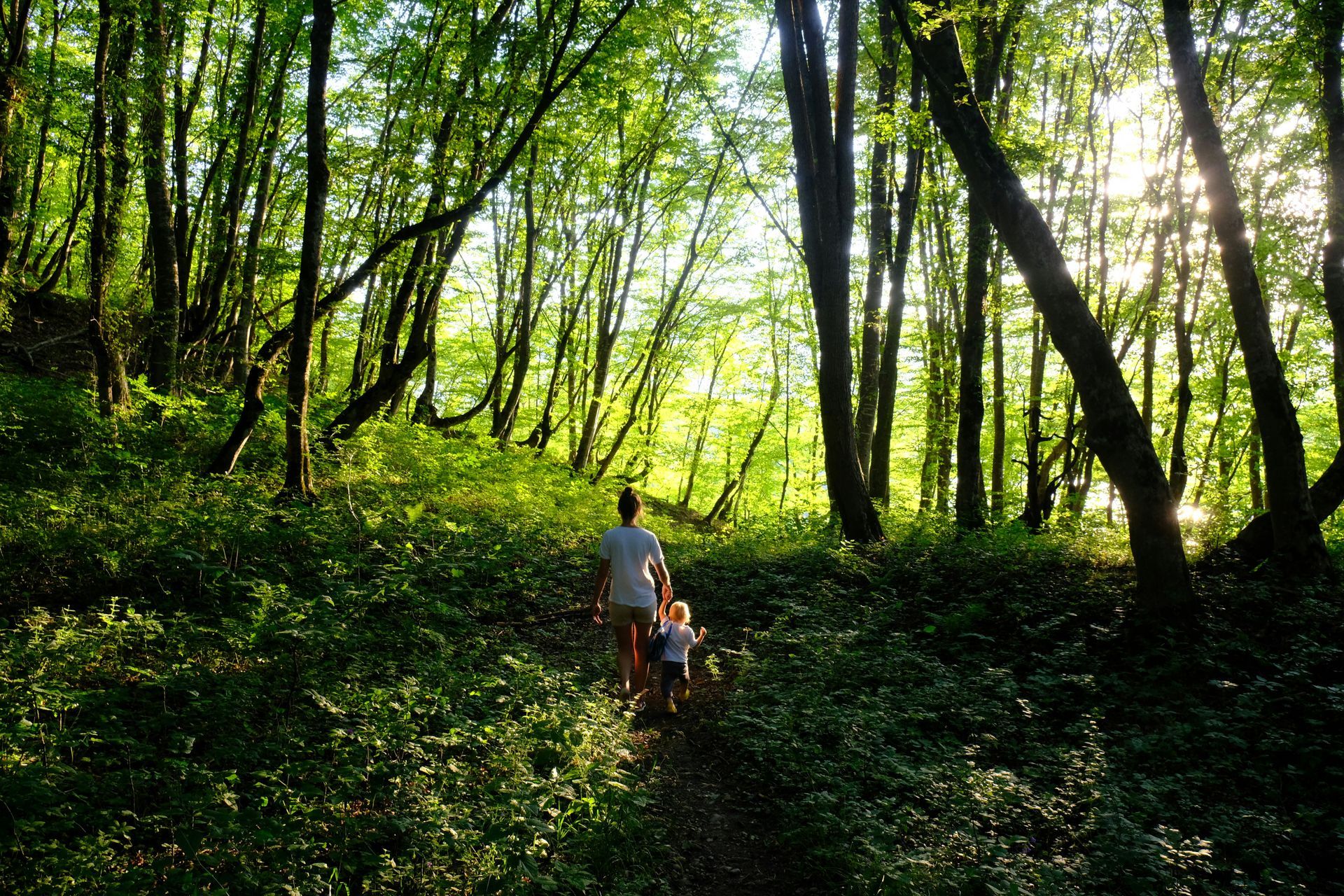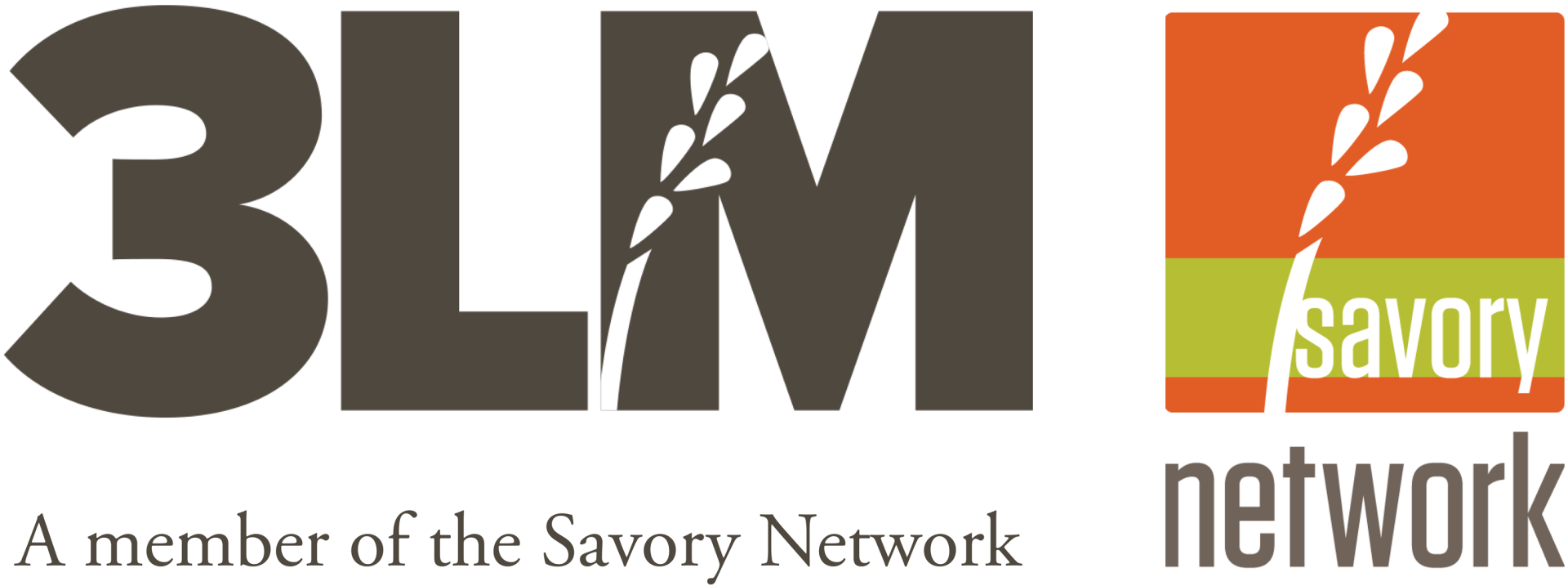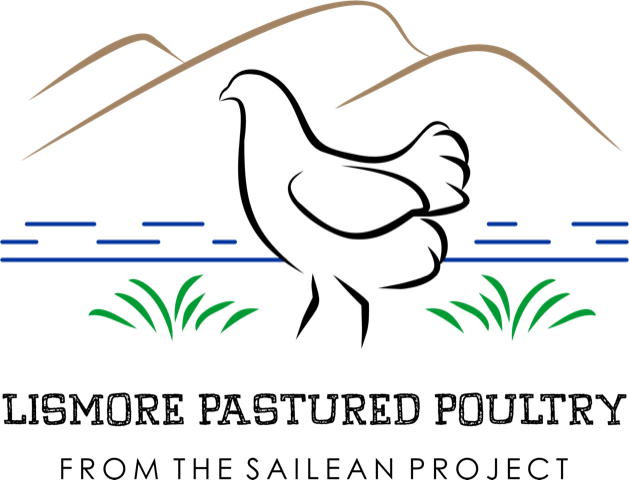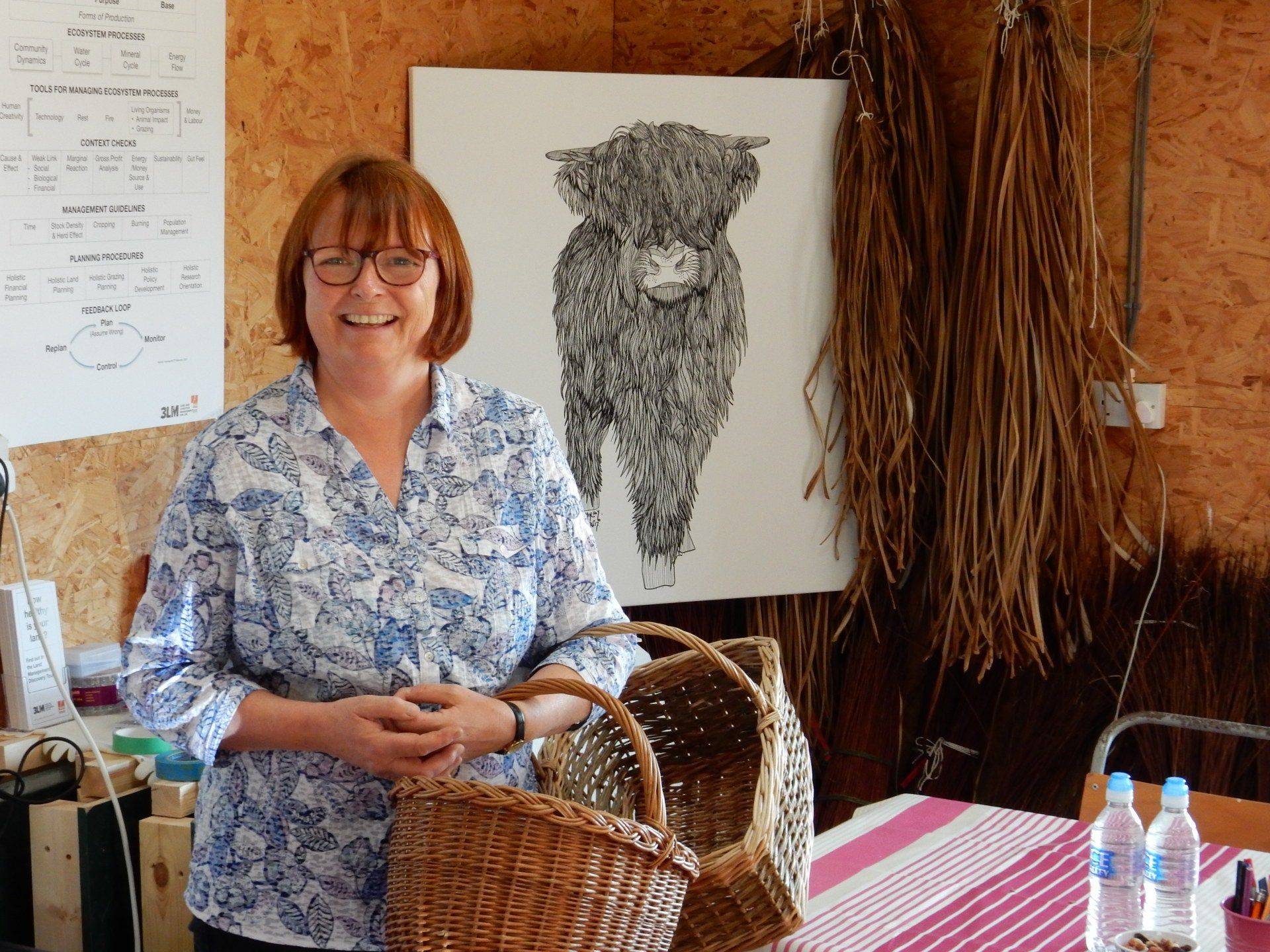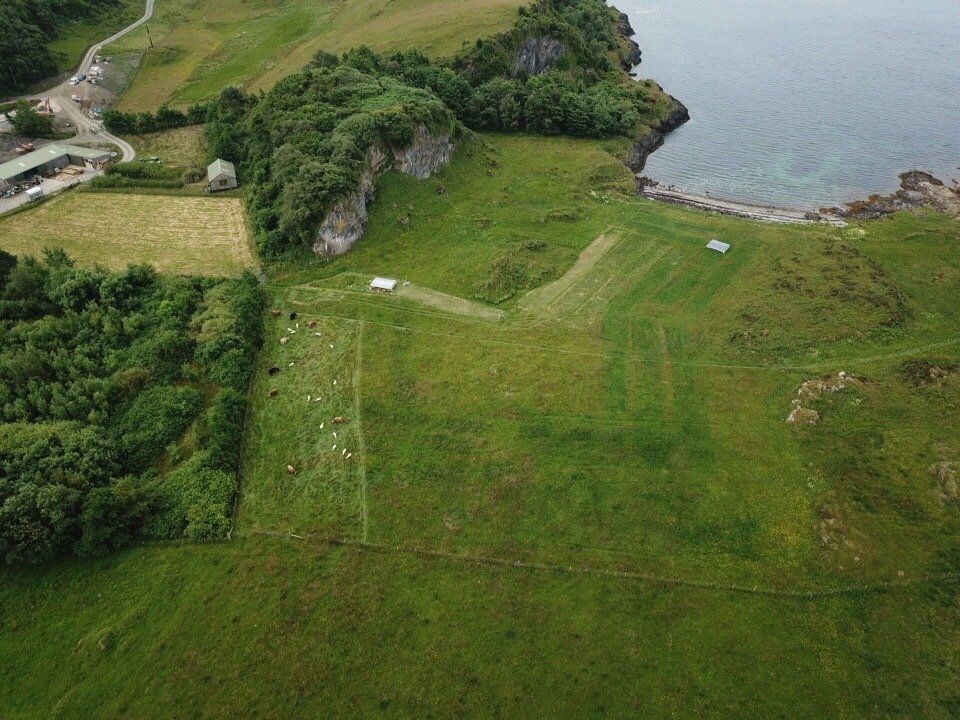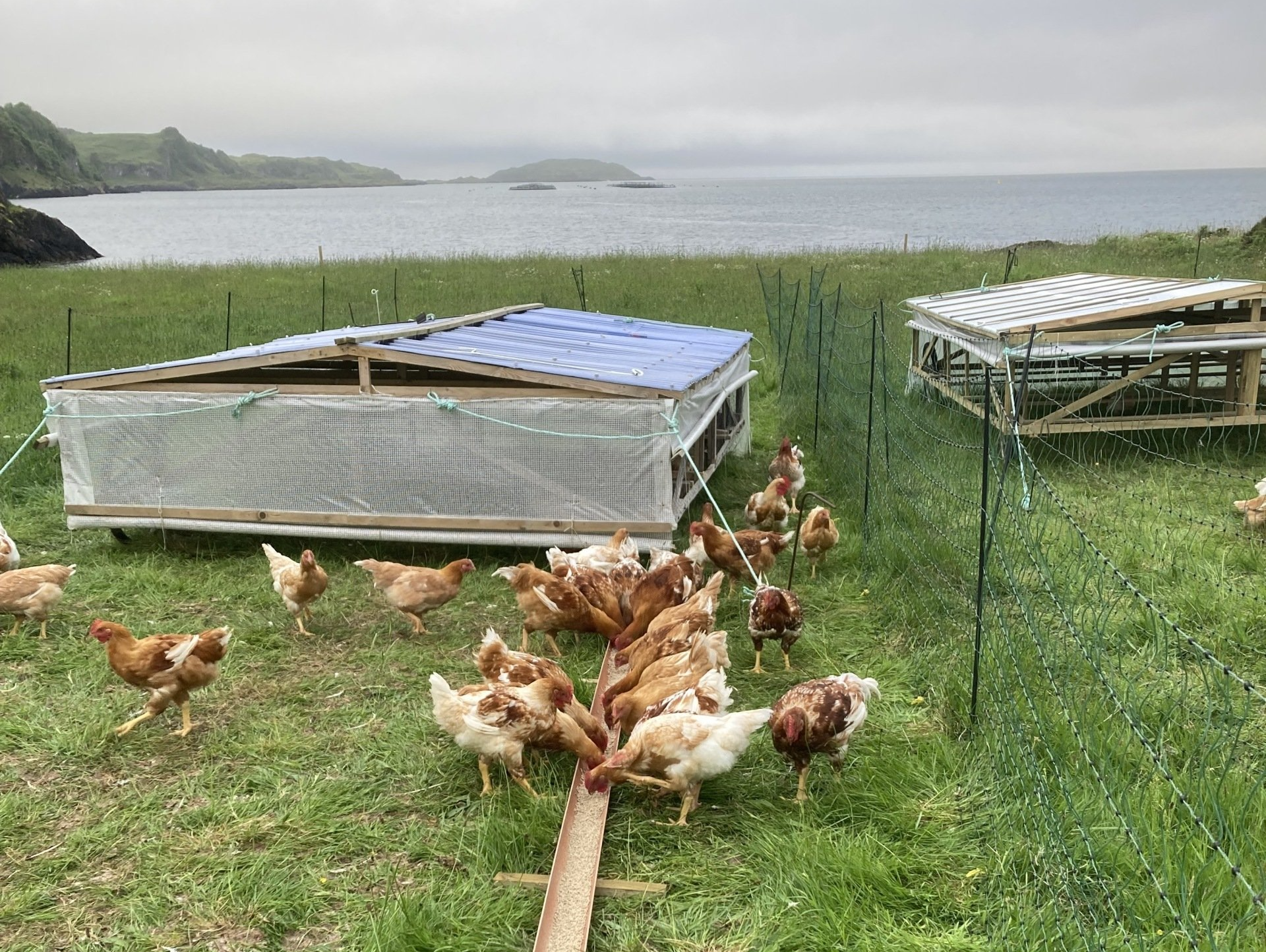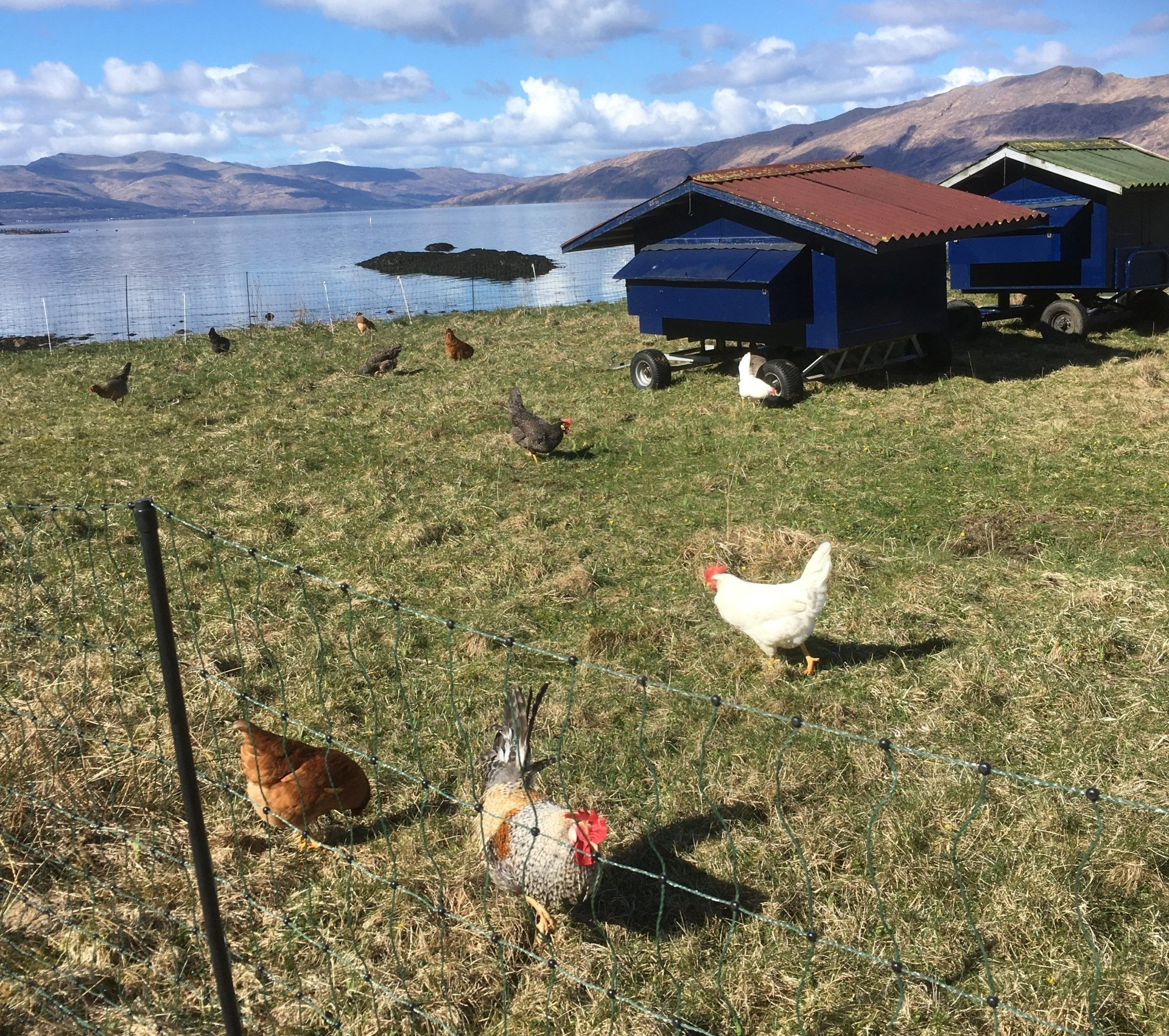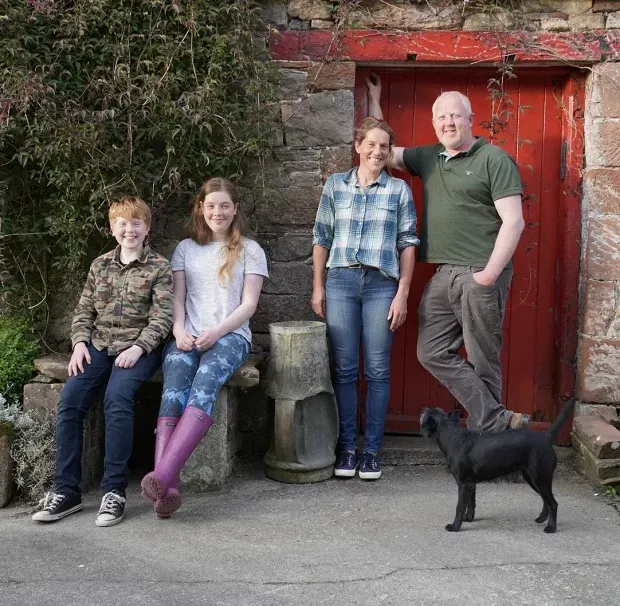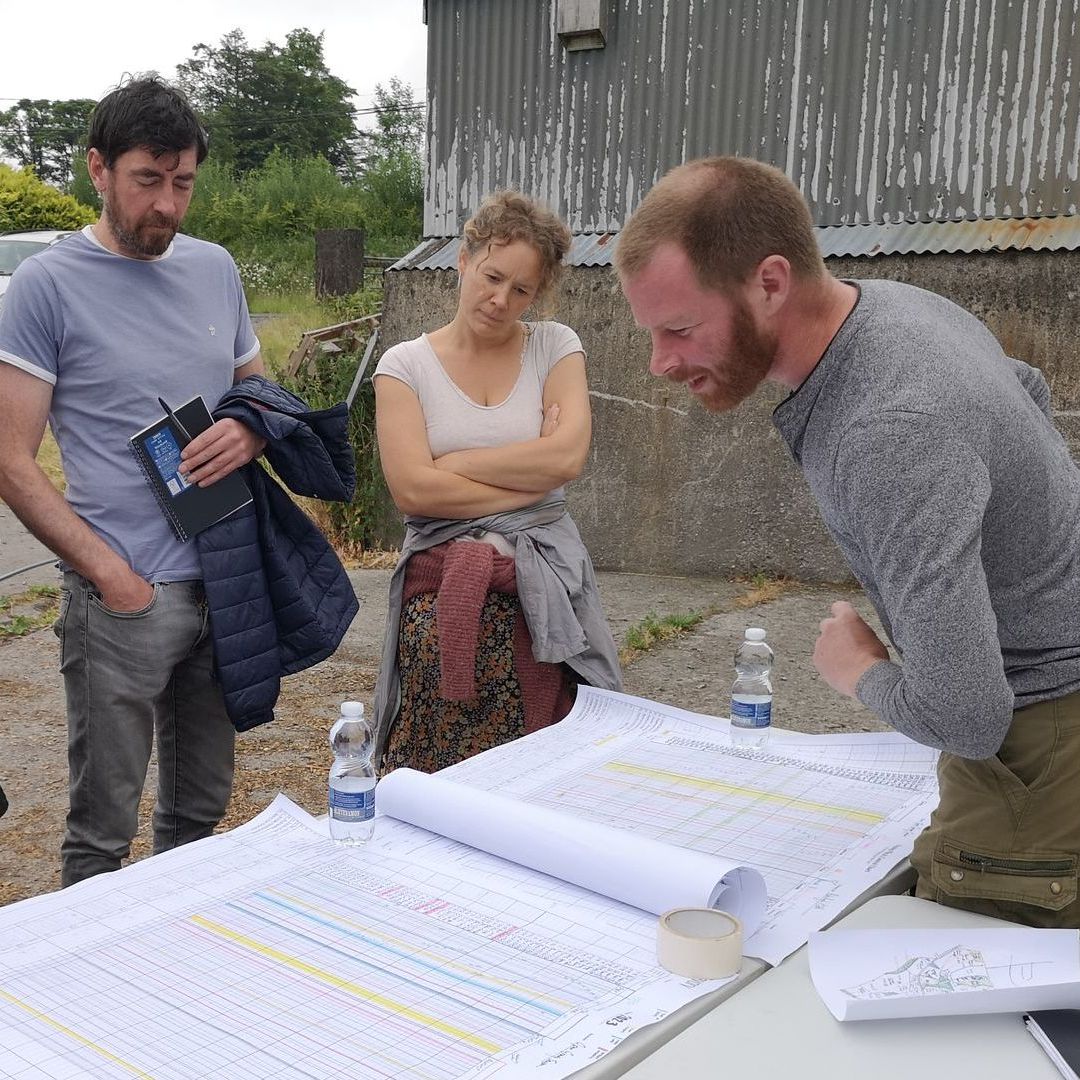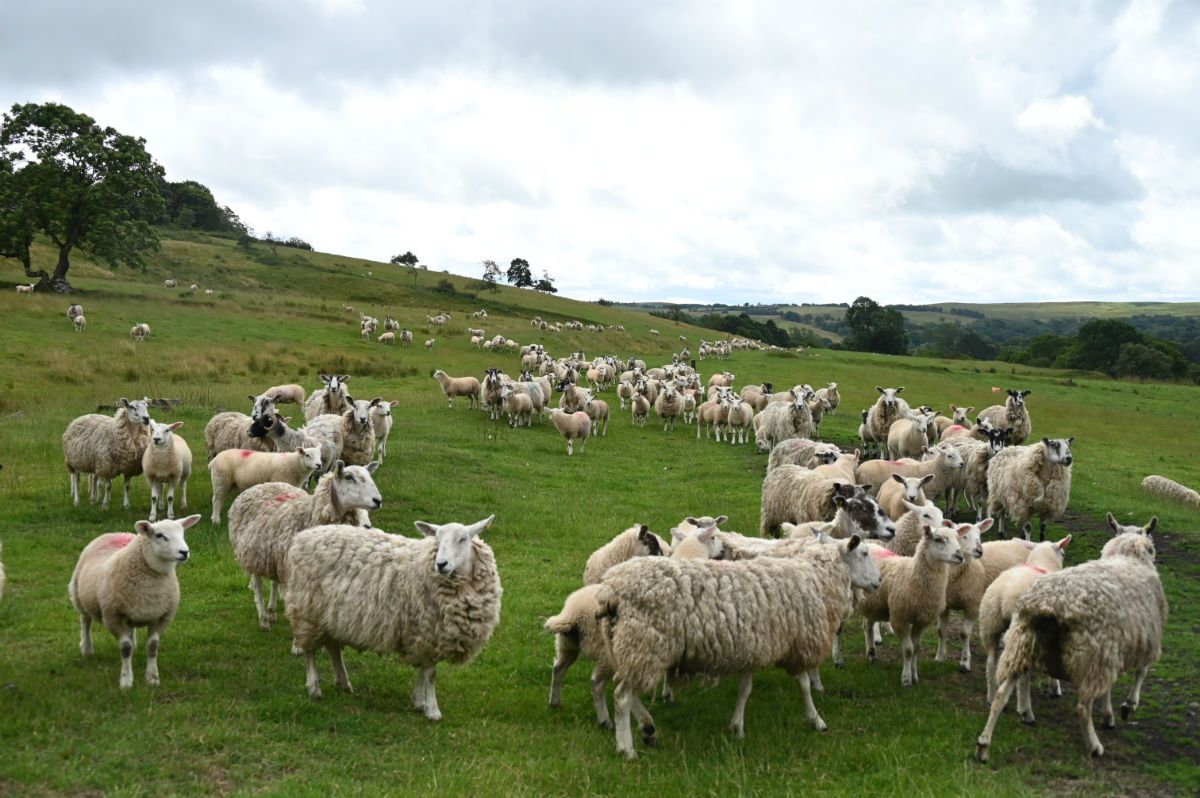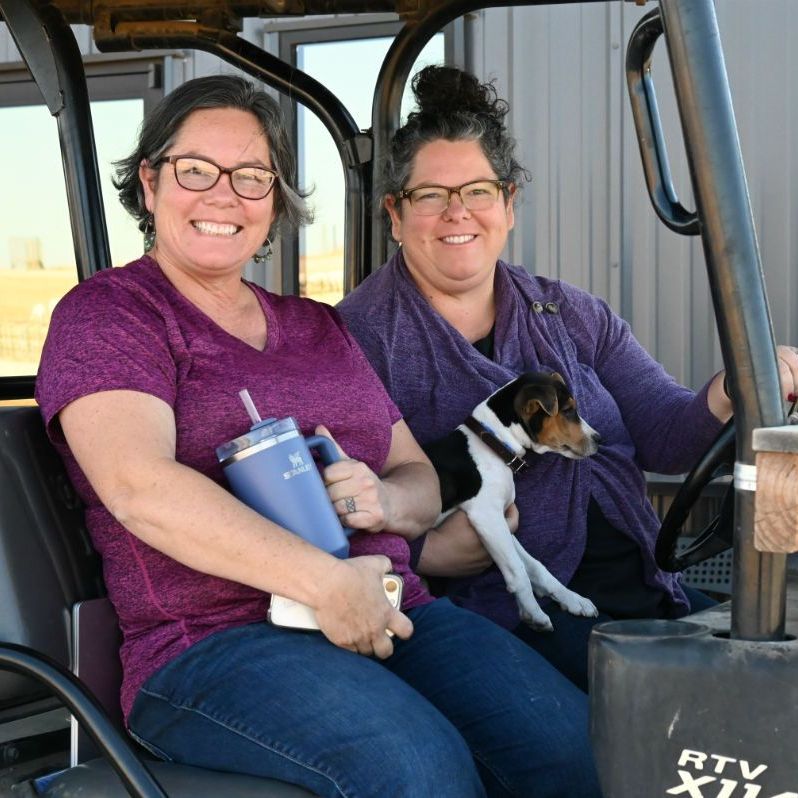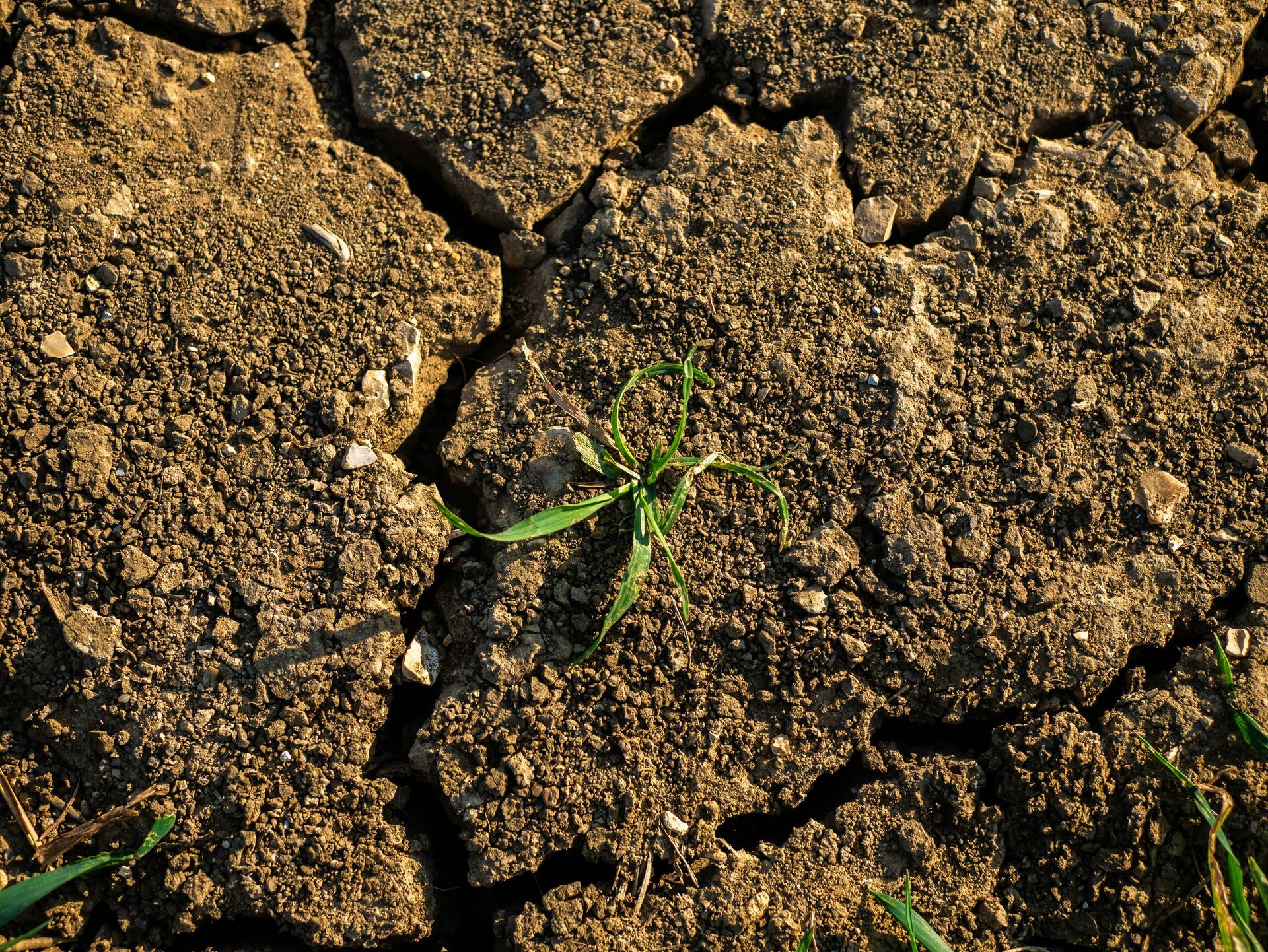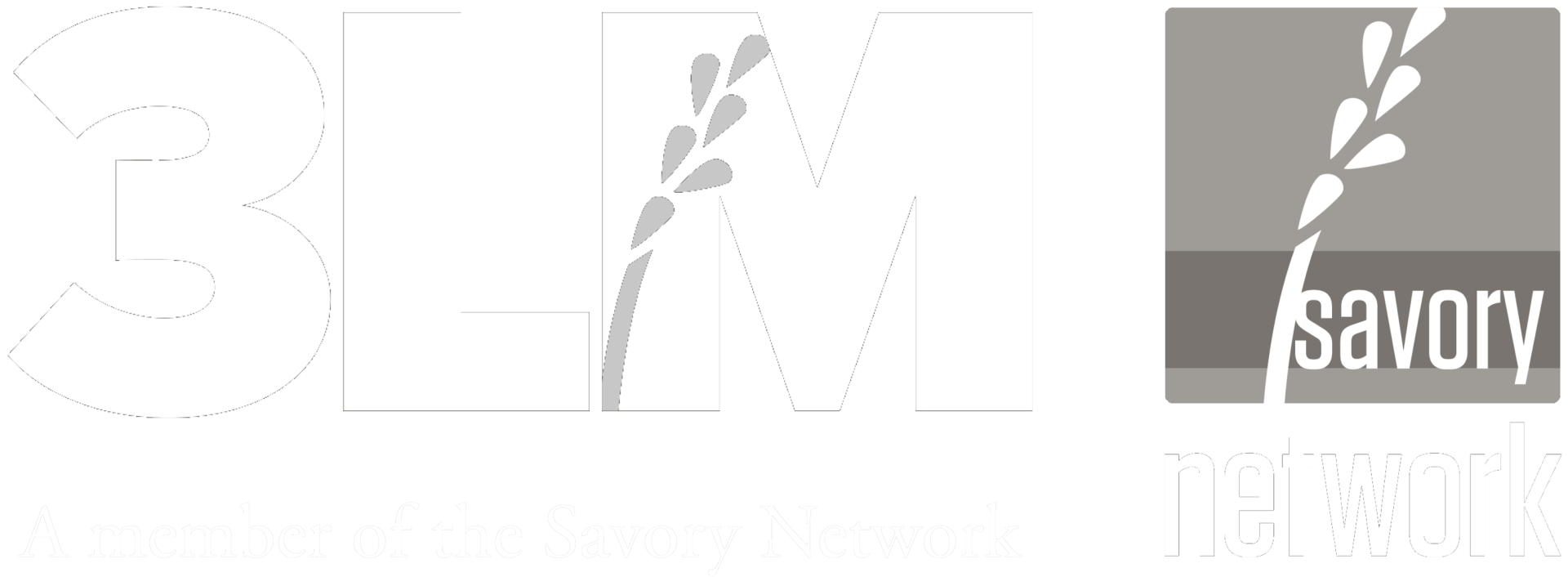Pasturing Poultry
The cows shorten the grass, and the chickens eat the fly larvae and sanitize the pastures. This is a symbiotic relationship.
- Joel Salatin
Gilly pastures poultry off the West Coast of Scotland
Gilly is a pasture poultry farmer with her husband Roger in the West Coast of Scotland at The Sailean Project. With 10 Highland cattle, 15 sheep, 500 pastured broilers, along with 80 laying hens a year.
Gilly and her husband Roger use a Holistic grazing plan for these birds to allow for the ecological benefits of soil regeneration and to kick-start the nutrient cycle. Poultry definitely improve the sward of their pasture, as you can see from the aerial photo below.
Electric nets protect birds from mink
Firstly, the cattle and sheep graze a paddock eating one-third, trampling one-third, and leaving one-third, whilst spreading their dung widely. The area is left to rest for four to five days before the pastured poultry are moved in.
Batches of approximately 70 birds are enclosed within 2 x 25 m electric nets to protect them from mink.
Each pen has a Joel Salatin-like shelter on bicycle wheels with drop-down sides made from scaffolding sheeting to afford protection from sun, wind, and rain. This arrangement allows the birds access to fresh grass at all times.
The shelter is moved once a day within the netting pen from the age of 3 weeks to 6 weeks, and then twice a day to avoid over-fouling the ground. The netting is moved forward every 4 days.
Below is an image of the enclosure and surrounding fence.
Tips for promoting bird health on pasture
In the UK there is no animal protein in poultry feed and it contains only 15 µgrams of supplemented B12 per ton. Gilly found this can be insufficient for optimal health of the birds.
By following the flerd of cattle and sheep, the broilers forage for insects and bugs in the cowpats, supplementing their rationed organic feed pellets. There is B12 in both the cow pat and the insects.
Gilly has in the past found that if the broilers went onto the land before the herbivores, they ended up with a B12 deficiency. Gilly also treats their water with a poultry vitamin supplement.
Gilly’s hens also pass over the grazed paddocks in mobile coops spreading their own dung, and scratching the cowpats, both of which improve the pasture and makes for delicious, rich bright yellow yolk eggs!
The Sasso breed yields tasty, moist meat on pasture
Above are images of the new microslaughtery that has been built on site.
Gilly and Roger have found that the Sasso breed of broilers suit their outdoor system best yielding a very tasty moist meat. Both males and females are raised to weigh about 3 kg live weight, giving a 2 to 2.5 kg carcass weight, taking usually 62 days.
After a long battle with the authorities, and eventually involving the food and farming minister, Fergus Ewing, Gilly and Roger both now hold their Welfare of Animals at the Time of Killing (WATOK) licence, and have possibly the smallest approved microslaughtery in the UK.
Paving the way for direct sales of pastured poultry in Scotland
Gilly and Roger have paved the way in Scotland for direct sale of high quality pastured poultry from the farm, keeping food local, and fulfilling a demand for more ethically produced meat.
All the meat (beef, lamb and chicken) that is produced on the farm is sold locally and to tourists that visit the island, it is also available at the Isle of Lismore Café, featured in the phoograph below.
Get your own WATOK licence
Gilly is now also helping others to get their own WATOK licence.
